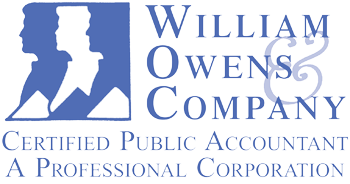
Are you self-employed and still want an employee matching retirement contribution plan? Well, you can with a SIMPLE IRA.
SIMPLE IRA
SIMPLE IRA stands for "Savings Incentive Match Plans for Employees." It’s a kind of retirement plan tailored for small businesses and they are designed to promote small business employers to offer retirement coverage to their employees. Additionally, they can be used for self-employed people even if they don’t have employees.
There are 2 ways SIMPLE IRA plans aggregate funds; the first is by taking the contribution out of the employee’s salary and secondly, the employer then makes a "matching" contribution. Note that the match doesn’t have to be a one-hundred percent match. If you work for yourself and don’t have any employees, the IRS allows you, the business owner, to pay your max contribution and then you can contribute as the employer matching the contribution. The advantage is that you can, essentially, increase your max contribution—even double it.
SIMPLE IRA Plan Requirements:
- You must have 100 employees or less
- You can’t have any other retirement accounts
- You have to file Form 5500 yearly.
- You (as an employee) and your employees must make at least $5k per year.
Advantages & Disadvantages:
- A SIMPLE Plan is not beholden to the contribution rules that typical 401(k) plans are
- All contributions by employees are fully vested
- Low effort administration method
- Employees have some versatility in regards to hardship withdrawals and options for loans although it’s burdensome for the employer
- You can only have the one retirement plan
Amount of Allowable Contributions and Deductions
A SIMPLE IRA Plan, compared to other plans, allows those with average incomes to invest and deduct more than other plans. When you have a SIMPLE IRA Plan, you’re allowed to invest and deduct all or a portion of your business’s income as someone who is self-employed. As of 2015, the max contribution that is allowed for your employer to take out of your check (also known as elective deferral) is $12,500. However, as you are both the employee (who can contribute $12,500) and the employer (who can match your contribution of $12,500) can essentially make an annual retirement plan contribution of $25k.
If you are over the age of fifty, you can make “catch up” contributions. Over 50, you’re allowed to contribute an additional $3,000 annually.
For instance, if you made $40k, with a SIMPLE IRA, you could invest and deduct $12,500 as your employee status and if you’re over 50, you can invest an additional $3,000 along with the employer match of another $15,500 which is a total annual contribution of $31k.
If you were to fall into a lower tax bracket, a SIMPLE IRA Plan tax credit up to $2,000 in 2015 for single filers ($4,000 married filing jointly) may be available (also known as the "Saver's Credit"). Your income can’t exceed the threshold of $61k for married filing jointly, $30,500 for those filing single and $45,750 for those claiming head of household.
If you run your business out of your home, SIMPLE IRA plans are a great option. This includes stay-at-home spouses making some income from a side business. Additionally, if the money earned from the side business is not required for expenses, then all the earnings can go towards retirement contributions so long as it’s not beyond the limitations.
A traditional 401(k) does allow you though, the ability to contribute more and contribute more often. For example, if you made $100k, the total you could contribute with a SIMPLE IRA Plan would be $15,500 but if you had a 401(k), you’d be able to contribute $43,500.
Withdrawals from Your SIMPLE IRA Plan
You can withdraw from your SIMPLE IRA as much as you want however, it counts as taxable income and there is a 10% penalty tax for withdrawing early and there is a 25% tax on withdrawals made in the first 2 years of the account being set up.
When a SIMPLE Plan Isn’t The Best
If your self-employment income increases substantially, a SIMPLE Plan isn’t the best option.
Also you don’t directly have control over your investment. It may be best if you went with a something like a Keogh where you are the trustee of the investment. However, most self-employed people’s SIMPLE IRA Plan works basically similar to the SEP-IRA.
There are also plans that allow a deduction for one year when the contribution is made the following tax year albeit prior to the tax filing deadline. This requirement is applicable with SIMPLE IRA Plans as well for the matching (3 percent of earnings) contribution you make as employer.
A good guideline to keep in mind is the quicker your contributions goes into the account, the longer it will work for you without being taxed—delaying is not the most prudent action.
Also prior to the tax-filing deadline, you can’t create a SIMPLE Plan for the year before and claim the deduction as you can with SEPs. A SIMPLE IRA Plan has to be set up by October 1 of that same year unless the business is created after October 1. In this case, the SIMPLE IRA Plan has to be set up as soon as reasonably possible.
Another drawback happens when a SIMPLE IRA Plan is created for a side business and you happen to already be in a 401(k) plan as an employee or in another business. For both accounts you’re only allowed just a little more than the max contribution of the SIMPLE which is significantly less. So, your 401(k) contribution + your SIMPLE contribution cannot exceed $18k as of 2015.
How to Create a SIMPLE IRA Plan
A SIMPLE IRA Plan can be set up on your own by using IRS Form 5304-SIMPLE IRA PLAN or Form 5305-SIMPLE IRA PLAN. However, most people go through financial institutions or a CPA—one familiar with the breadth of their tax and financial situation
